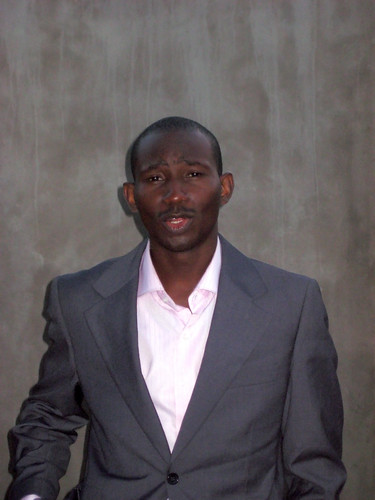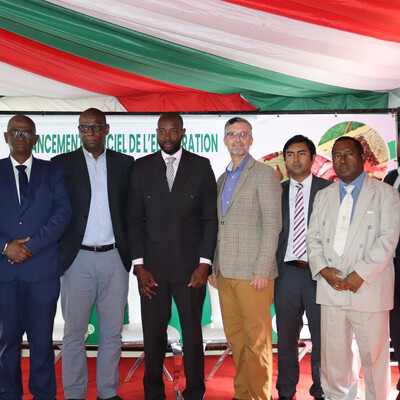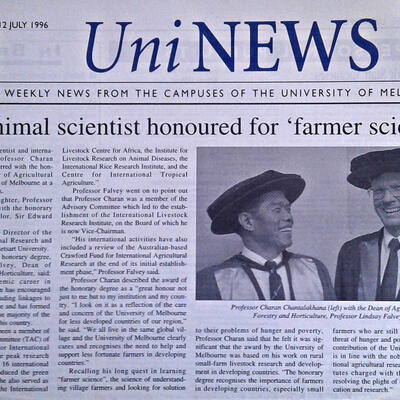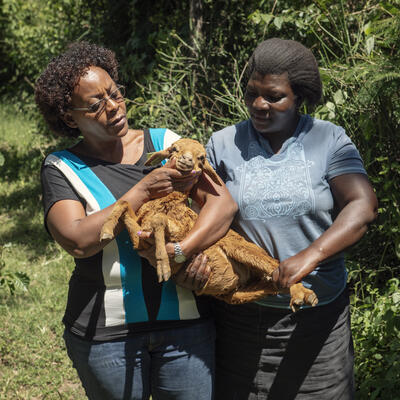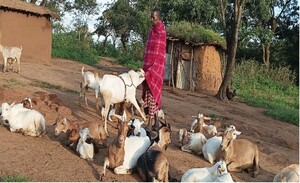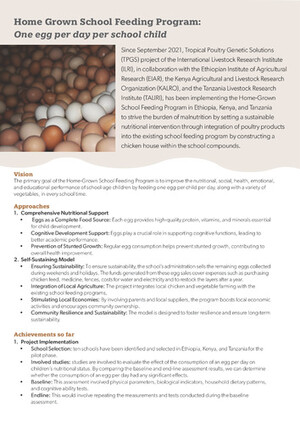
Voices on chicken genetics: Building capacity to help Nigeria’s farmers gain from chicken
Oladeji Bamidele, national project coordinator in the Nigeria country team, introduces himself and his work with the program. It is one of a series of portraits of key people in African Chicken Genetic Gains (ACGG).
Tell us about your background
I studied animal sciences and my first and second degrees focused on poultry and my PhD was about cattle. So with this project I am coming back to work on a livestock species I am familiar with.
My training is in the field of genomics and bio-informatics. I am interested in the long-term genetic gains from projects such as ACGG and at the onset of joining the project I knew I was interested in its technical aspects e.g. molecular analysis and not just administrative and managerial activities.
What is your function and what are you currently working to accomplish in ACGG?
We have a 6-7 month time frame within which to engage private companies to partner with us to work on long-term genetic gains. If we manage to get them on board in the next four to five months, we will be in good shape and they will help us with the importation of the foreign germplasm. It seems that we still have to figure out a sustainable business model that will fit into the research and development objectives of the project. This is very important if we are to successfully partner with the private sector.
What is the next piece of work you are focusing on within and outside ACGG?
The on-station/on-farm trial, primarily. Also, importantly is the establishment of structures for a sustainable Community Innovation Unit (CIU) across the five sub-national zones and how to get these CIUs to work and function properly.
Outside ACGG, I am involved in an Africa-Brazil Agricultural Innovation Marketplace project which is conducting a genomic analysis of the Nigerian and Brazilian locally adapted chickens. This project is led by Prof Ofelia Omitogun, who supervised my doctoral research and I provide bioinformatics support to her team.
Why does this project matter and what gets you excited about it?
I had this question when going to graduate school: At what point do you make science relevant to people? When and how do you make research outputs useful for ordinary people? How does one translate research products into a format or product that can be relevant for lay people? This project answers these questions. It packages research and science in a form that will directly and positively impact people, especially the poor in developing countries
What about the project is a cause of concern for you and how can it be addressed?
If we understand the business component and get companies to see how they benefit we will be fine. But that is a real challenge. In addition, we have a number of technical activities that need to be up and running on time, according to the schedule, and we need to make sure that financial/budget constraints do not affect implementation of these activities.
What do you foresee as the lasting impact of ACGG?
If we increased capacity in terms of the technical know-how for smallholder chicken production, we will have achieved some impact. Hopefully, we can also influence another generation with the capacity to take poultry development to the next level. Also, it will be great to see farmers’ incomes increased as a result of taking up poultry farming. I really want to see if smallholder farmers are able to have meaningfully improved livelihoods.
Any other thought?
I listened to the meeting of the project’s scientific and industrial advisory council (SIA) and one of the questions it triggered for me is: looking at most of the partners involved in this project, how much project management planning, design etc. do these partners have and can we build capacity on that front too? Perhaps we need to have project development/management training so we better understand how to reframe our scientific ideas in development terms and learn how to package our research for use by end users. This requires that we frame ACGG goals, outcomes and targets in a coherent and effective way. Also, we need to pay close attention to how we handle the expectations of farmers with respect to the project’s goals.





